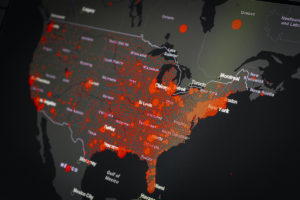 How has COVID-19 Changed the Way Consumers Spend Money?
How has COVID-19 Changed the Way Consumers Spend Money?
So much has changed in the face of COVID-19, including how consumers pay. Already, small businesses have seen a 27% increase in the use of contactless payment versus prior to COVID-19. Businesses that didn’t accept payments like Apple Pay before are also quickly adapting to keep up with the increased popularity of the payment system. In fact, the total usage of contactless payments in the United States is expected to be eight times higher than before.
Increased Use of Contactless Payments

Even before COVID-19, money had a reputation for being ‘dirty.’ While the World Health Organization hasn’t necessarily banned the use of paper money, they’ve highly suggested thorough hand washing after touching cash. The Federal Reserve has even created a money sterilization program for money coming in from certain countries.
Many businesses are accepting cash less and less and turning to credit cards and contactless payments as their preferred method. Even restaurant chains, such as Burger King are advertising their plea for use of contactless payments and Walmart changed their procedures at the self-checkout that allows for touchless checkout when using Walmart Pay.
Consumers don’t want to touch cash and neither do the cashiers any longer. Using contactless payments eliminates one more touchpoint between parties that could potentially spread the virus, even with the use of a credit card. While the US was one of the last to adopt contactless payments as a common payment method, its popularity is quickly increasing.
The Issuance of Contactless Cards
With the sudden increase in contactless payments, card issuers must reissue cards to a much larger audience than before. Prior to COVID-19, card issuers waited until cad expiration or customer request to issue a contactless payment card because of the low usage rate. Today, though, the need is much greater and will require more consumers to have the capabilities.
Studies show that those in the 18 – 24-year-old bracket and the 25 – 44-year-old bracket are the most likely to use contactless payments most often. The other age brackets may seem resistant, simply due to a lack of education on the concept. With the idea becoming more widespread, however, the use is expected to greatly increase.
How Contactless Payments are Used

Today, contactless payments are used for just about any purpose from ordering your food in the drive-thru to paying for your order in line at the grocery store. The idea is to eliminate one point of contact between employees and consumers, therefore, reducing the spread of the virus.
While many consumers aren’t familiar or just weren’t interested in using contactless payments before, it’s quickly catching on and becoming more common. With greater advertisement and education of the product and acceptance of it at retailers, restaurants, and services everywhere, the idea will catch on even faster and cash will become the least likely form of payment for most businesses and consumers in the United States. Knowing how contactless payments work and adapting isn’t just a way of accepting new technology; it also helps increase the safety of doing business.
